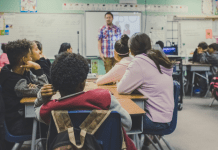I am starting a movement. It’s called “Let’s Fix This,” and it tackles the fact that many primary school children in the U.S. have “missed learning” to read fluently due to the Covid-19 pandemic.
On a New York Times podcast entitled “The Education Lost to the Pandemic: An exploration of what students didn’t learn because of the pandemic,” the New York Times Education Consultant Dana Goldstein stated that 1 million children were out of school during the pandemic and that those who were in attendance suffered from chaotic classroom experiences.
All the “missed learning” is now affecting many children’s ability to read at grade level.

Current reading level deficits in grade school children across the U.S. are most pronounced in cohort groups who were supposed to complete kindergarten, first, second, and third grades during the pandemic. Goldstein stated:
“We know from research that students who are not reading fluently and well in third grade have lifelong impacts. They get lower grades as they go through their school experience. They don’t have the reading skills to access much of the more complex information in math, science, or social studies that they will need to know. And it increases a child’s risk of dropping out of high school and not going on to or completing college if they cannot read well by the end of third grade.”
We need to fix this! Some of these children were in fourth grade last year, and if they do not work to close their reading gaps this summer, they will get battered in the fall with the higher reading requirements of fifth grade.
I’ve been tutoring online since 2015 and working to find the quickest way to level up remedial readers. I have developed a technique that allows my students to gain, on average, one grade level in about three months. My method is based on an established practice that’s been around for a while but has fallen out of fashion. It’s called guided reading.
I used this technique with a student with mild to medium dyslexia, and guided reading worked very well for her. At the beginning of her 8th-grade year, she was reading on a 5th-grade level, but she progressed rapidly through guided reading sessions twice weekly. She graduated from 8th grade and improved her grades enough to get into her preferred high school. When she started 9th grade last fall, her parents kept her IEP status through the transition to high school, “just in case,” but she soon requested that her teachers stop taking her out of regular classes because she “could do it herself.” She just finished her first year of high school on the honor roll!
Guided reading involves the child reading aloud for 30 minutes while the adult listener jots down words and letter combinations the reader stumbles over or cannot recognize how to pronounce. After the child is finished reading, the listener generates lists of words that share a spelling pattern or letter combination that the child did not pronounce correctly. These lists are called “word families.”
An example of a word family could be words that share a particular vowel combination, such as “ai.” An “ai” word family list could contain the words: “train,” “rain,” “fair,” “hairy,” “maintain,” etc. Another word family could all have the a_e pattern (long a, consonant, silent e), or maybe the list of words illustrates the “I before e, except after c” rule.
It’s simple to see where the child’s gaps are when you just heard them reading out loud and heard the exact things they missed. A parent can totally do this at home! You go over the list until the child “gets” the pattern. It might take about 10 words or so to practice enough to remember a specific letter combination.
How often are you reading at home with your kids this summer?













